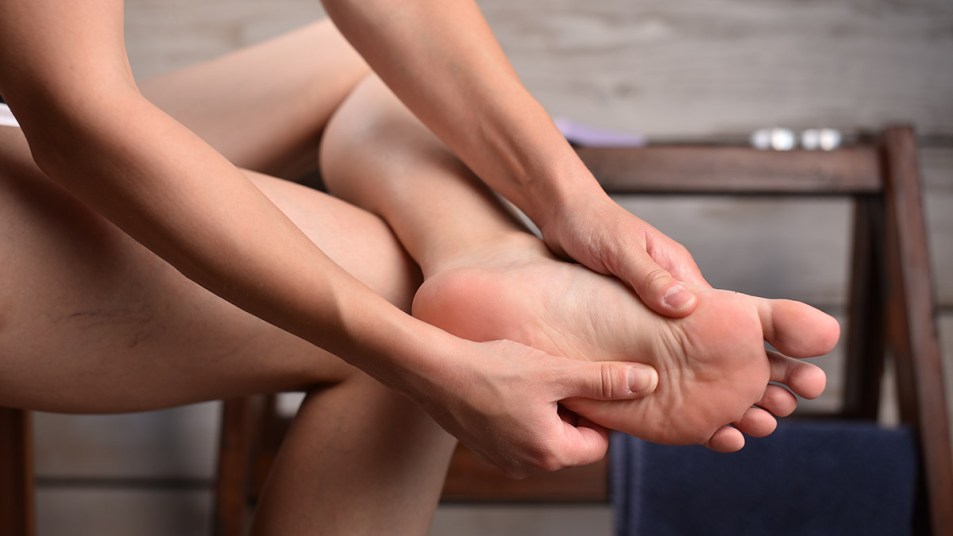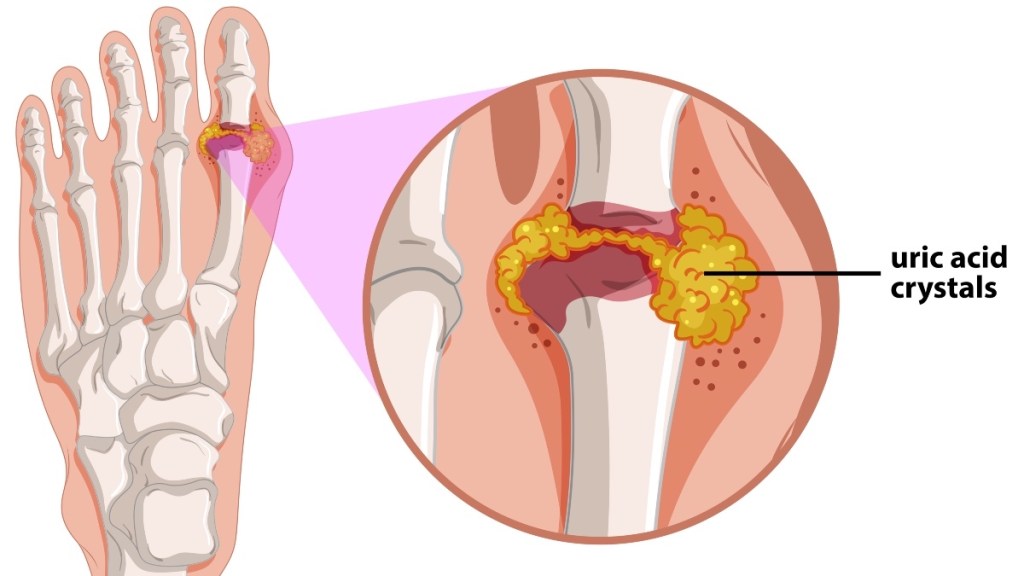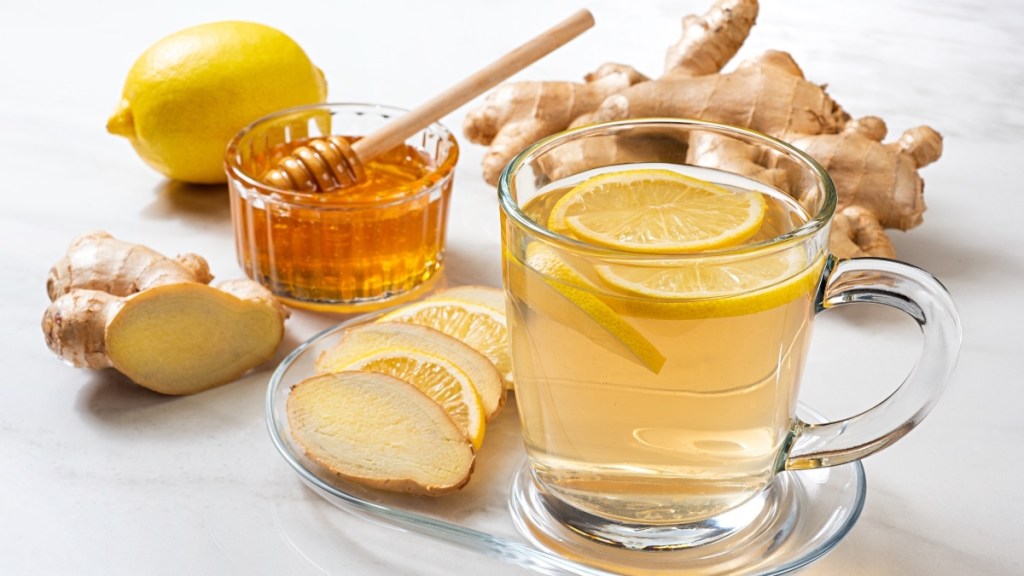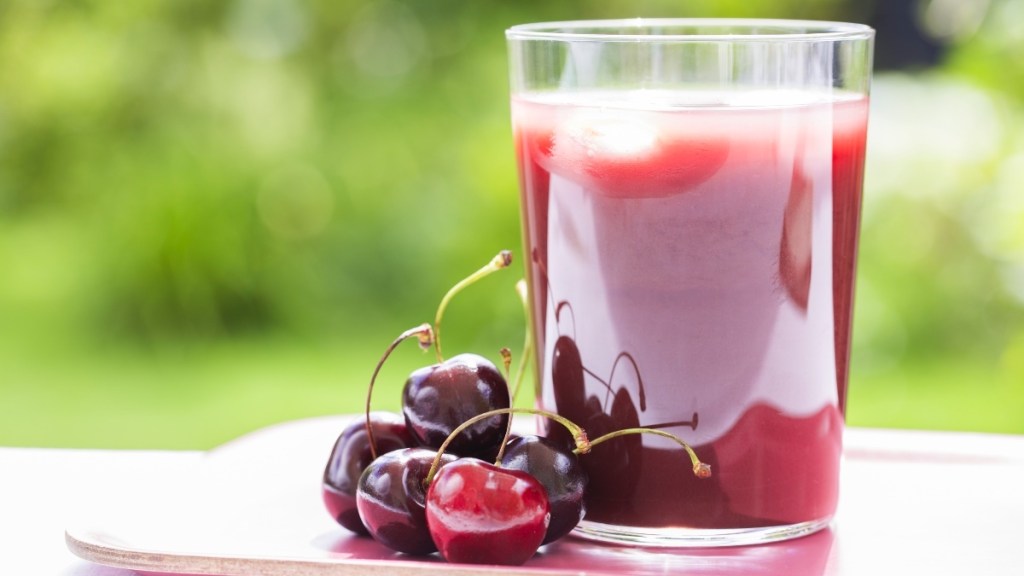Doctor’s Best Home Remedies to Ease the Pain of a Gout Flare — in 10 Minutes or Less
Plus, 4 doctor-approved natural ways to lower uric acid levels to prevent future gout pain

If you often find yourself sidelined by a sudden, throbbing pain in your joints, especially in your big toe, you may be suffering from a gout attack. Flare ups of this common type of arthritis can also cause the affected joint to feel swollen, tender and warm to the touch. Here, we break down what you need to know about gout and how to reduce your risk of developing it. Plus, we share the best 10 minute gout cure — and more easy home remedies — that alleviate pain fast.
What is gout?
Gout is the most common form of inflammatory arthritis and occurs when inflammation in a joint causes symptoms like redness, tenderness and swelling. “Gout is caused by an excess of uric acid in the body, which deposits in joints and causes intermittent episodes of inflammatory arthritis,” explains Theodore R. Fields, MD, a gout specialist and attending rheumatologist at the Hospital for Special Surgery in New York, NY.
Uric acid is a waste product that the body creates when it breaks down chemicals called purines. These compounds are found in alcohol, high-sugar foods, red meat, turkey, certain seafood and high fructose corn syrup (as well as in some other foods). Everyone has uric acid in their body, but it’s when levels get too high that gout can be triggered. “If you have elevated uric acid, over time the blood carrying the uric acid ‘drops off’ some of the uric acid into the joints,” says Dr. Fields. “Gradually, the joints build up more and more uric acid. Ultimately, a person reaches a ‘critical level’ of uric acid in the joint, and then gets an ‘overflow’ of uric acid crystals into the joint fluid. Those crystals set off the inflammatory response we call a gout flare.” (Click through to discover how lowering uric acid can help you lose weight.)
While the joints are the most common place for uric acid to build up in gout patients, they aren’t the only spots. “Uric acid can deposit elsewhere in the body as part of the gout process, such as by having collections of uric acid form into kidney stones,” reveals Dr. Fields. “You can also get collections of uric acid felt below the skin, called tophi.” These are large bumps you can see and feel, though they usually aren’t painful. Common spots to develop tophi include the elbows, hands, feet, and the outer edge of the ear.

Common risk factors for gout
On the surface, things seem pretty straightforward: high uric acid equals gout. Unfortunately, it’s not that simple. “Not everyone with high uric acid gets gout, and people get gout at different times in their lives,” says Dr. Fields. “Multiple factors determine whether someone with high uric acid gets gout, and how early in life they get it.” Some of the factors that play the most prominent role in whether or not a person gets gout include:
1. Gender and age
“Men tend to get gout earlier than women,” Dr. Fields notes. “One explanation is that estrogen helps the kidneys get rid of more uric acid. So, when women reach menopause, they lose the estrogen effect and their uric acid can rise, leading to gout.” Indeed, up to 95% of women who get gout receive their diagnosis after menopause, according to research in Clinical Rheumatology. And a review in Advances in Rheumatology confirms age increases risk in both men and women. Another reason for this: The more years that pass, the more time uric acid in joints has to build up to gout-inducing levels.
2. Diet
What you eat plays a big role in gout, says Dr. Fields. The above review also states that women who ate the most purine-rich fish and shellfish had an increased gout risk compared to those who chose other protein sources. On the other hand, those who ate the most beans and legumes actually experienced a protective effect. There is also a relationship between high consumption of sugar-sweetened soft drinks and juices and elevated odds of developing gout.
3. Alcohol consumption
Alcohol is high in purines, which means it’s directly related to gout risk. Multiple studies have found a link between a greater risk of developing gout in alcohol drinkers compared to those who abstained. (Want an alternative to your favorite tipple? Click through for delicious non-alcoholic drinks.)
Why gout pain flares up at night
Gout flare ups — which are characterized by a joint suddenly feeling hot, swollen and painfully tender — can happen at any time of day, says Dr. Fields. But the most common time for one to strike is in the middle of the night. “A classic story is someone going to bed feeling fine and waking up in the middle of the night with a hot, red toe,” he adds. “One theory for why gout happens in the middle of the night is that your legs are elevated, which moves fluid out of the legs and into the body. This can lead to less fluid in a joint, such as a toe. That means there is less fluid to dissolve the uric acid crystals, and they can be released and cause inflammation.”
While it’s common for gout pain to make itself known at night, a flare up can happen at any time of day. Some of the biggest triggers of a gout attack, according to Dr. Fields:
- Trauma or injury in a joint
- Dehydration
- Eating trigger foods that are high in purines
How long does a gout flare last?
Gout is a chronic condition for which there is technically no cure. But consistent treatment can help eliminate flare-ups entirely. The length of a gout flare-up varies and depends on how quickly you treat it. Dr. Fields notes that symptoms are at their worst on the first day or two of a flare, as inflammation rapidly ramps up. If you treat a gout attack right away, the flare should subside in a matter of days. If you aren’t able treat it speedily or try to ride it out, a flare-up can last as long as two weeks. “It is highly beneficial to treat gout flares quickly,” Dr. Fields says. “As the inflammation ramps up, it often takes a longer time and higher doses of medication to knock out the flare.”
The best 10 minute gout cure: ginger tea
While it’s true that there’s no true “cure” for gout, taking a 10 minute break to sip ginger tea can dramatically reduce the pain of a flare up. In fact, drinking up to 4 cups of ginger tea daily calms gout inflammation as well as prescription medication, suggests a study in Annals of Biological Research. Credit goes to the anti-inflammatory compound 6-Gingerol, which lowers inflammatory markers and swelling as well as the prescription NSAID indomethacin, minus side effects like heartburn and upset stomach.
Simply steep a ginger tea bag or 1″ of fresh ginger in a cup of hot water for 5 to 10 minutes, then sip to get the benefits. Tip: Add a squeeze of lemon juice to your teacup. Research in the Annals of the Rheumatic Diseases suggests lemon neutralizes uric acid circulating in the body, boosting the tea’s gout-fighting effects. (Click through to discover the immune-boosting health benefits of ginger shots.)

More 10 minute cures to ease gout pain
If you’re not fan of ginger, or if you’re struggling with an especially painful gout flare up and need a little extra relief, these speedy home remedies can help.
Apply ice
“Local ice application for about 10 minutes at a time can ease the pain of a gout flare,” says Dr. Fields. Proof it works: A study in the Journal of Rheumatology found that people experiencing a gout flare-up who applied ice experienced a 43% greater reduction in pain than those who didn’t use the cooling treatment. Ice tames painful inflammation that worsen a gout attack. Simply place a gel ice pack over sore, affected joints for 10 minutes. Repeat 3 to 4 times daily, or as needed.
Try an OTC pain killer
“Over-the-counter anti-inflammatory medications can help with gout,” Dr. Fields says. However, it’s not as simple as pulling out the bottle you keep in your medicine cabinet. “The doses of these medications needed to control gout are higher than the over-the-counter doses listed on the bottle. You should ask your provider in advance if you have reasons not to take them, such as active ulcer disease, uncontrolled hypertension, or significant heart disease,” he adds. Your doctor can help you determine the right dose to provide relief safely.
4 quick tips to curb future gout flare-ups
Once a gout flare up has subsided, you’ll want to keep future episodes at bay. And it’s easier than you may think. “Fortunately, gout is very preventable,” says Dr. Fields. “It requires lifetime treatment, but the treatment is generally very well tolerated by the vast majority of people.” Here are four ways to block future flare ups.
1. Sip tart cherry juice
Snacking on 10 tart cherries or drinking 4 to 8 oz. of 100% pure tart cherry juice daily wards off gout pain. “Tart cherry juice has been studied for years in relation to its profound ability to both lower uric acid as well as reduce gout flare ups,” says neurologist David Perlmutter, MD. “A lot of the science focuses on the role of plant chemicals called bioflavonoids as being the active ingredients that actively target uric acid formation.”
In fact, a study in Current Developments in Nutrition found that tart cherry juice lowers uric acid production by 19%. And a separate study in Arthritis and Rheumatism reported that sipping the juice for two days slashed the risk of a gout attack by 35%. And that number jumped to 75% for folks who were already taking medications for gout. (Click through for delicious — and healthy — tart cherry juice drinks.)

2. Consider an ancient fruit
Practitioners of Ayurvedic medicine have long prescribed the sweet-tart fruit of the terminalia bellirica tree for folks suffering from joint ailments. Now, a 6-month study in Clinical Pharmacology found it puts the brakes on uric acid production by blocking an enzyme called xanthine oxidase. And 89% of folks who took 500 mg. of terminalia bellirica extract twice daily brought their elevated uric acid levels down to normal — enough to sidestep future gout attacks. One to try: Life Extension Uric Acid Control (Buy from Amazon, $18).
3. Keep it cool
Keep the thermostat in your house in the 60-70-degree range to stay comfortable and free of gout pain. Research published in the American Journal of Epidemiology found that being exposed to temperatures well above 70 degrees Fahrenheit for 48 hours increased gout risk by 60%. That’s because high temperatures can trigger metabolic acidosis, a buildup of acid in the body that can increase the risk of uric acid crystallization.
4. Pour another cup of java
The next time you’re at the coffee shop, go for a large coffee instead of a medium — or simply brew an extra cup at home. Research in The American Journal of Clinical Nutrition found that women who drank 1-3 cups of coffee a day had a 22% lower risk of gout. And those who drank 4 or more cups had a 57% lower risk compared to those who didn’t drink any coffee at all. Coffee’s caffeine blocks the creation of uric acid, preventing its build-up in joints. But if you don’t drink caffeine, take heart: Decaf coffee also had a protective effect. It reduces gout attack rise 23% when you sip 4 cups daily. Thanks go to its chlorogenic acid, which improves insulin sensitivity to reduce uric acid production. (Click through to discover more health benefits of the chlorogenic acid in coffee).
Check out the video below for more foods and drinks that can help block gout (plus which to avoid).
For extra gout relief
If home remedies aren’t providing enough relief from gout flare ups, your doctor can prescribe medication that can help. “Most people will need a medication that lowers the uric acid, most commonly allopurinol,” Dr. Fields says. “This medication has been used since the 1960’s, and the great majority of people tolerate it with no problems.” He adds that extra flare-ups are common in the early months of taking allopurinol, so a medication called colchicine is commonly prescribed as well.
“By 6 months, a large proportion of gout patients can stop colchicine and just take the allopurinol,” says Dr. Fields. “Most commonly, by 6-12 months of allopurinol therapy, gout flares stop happening. The success rate of allopurinol treatment in gout is extremely high if people stick with it.”
For more ways to ease arthritis aches of all kinds:
How to Use Turmeric to Ease Joint Pain, Combat Inflammation, and Manage Arthritis
15 Best Hand Massagers for Arthritis, Carpal Tunnel, and Stiff Joints
More Than Half Of Us ‘Walk Crooked’ — How That Sets Us Up For Joint Pain + How To Fix It
This content is not a substitute for professional medical advice or diagnosis. Always consult your physician before pursuing any treatment plan.












